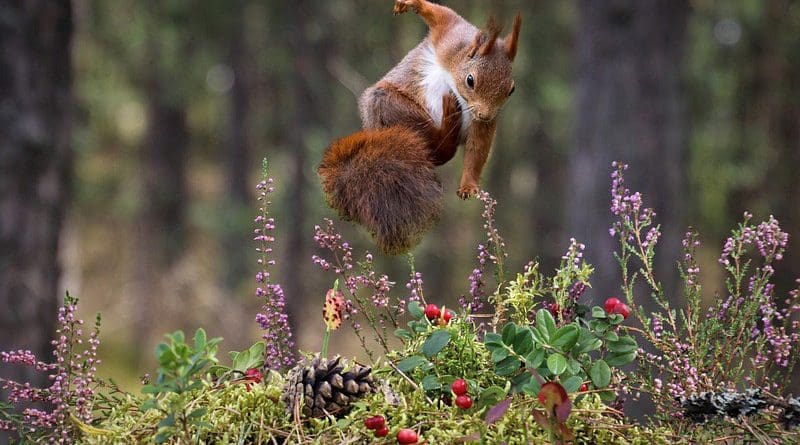How Squirrels Learn To Leap And Land Without Falling
When navigating their tree-top environments, where mistakes can result in fatal falls, wild squirrels consider trade-offs between branch bendiness and the distance between branches; they even invent “parkour-like” maneuvers on-the-fly to stick particularly tricky landings, according to a new study.
The findings reveal how decision-making and learning capabilities complement the biomechanical adaptations that enable squirrels’ tree-canopy acrobatic feats. Squirrels spend most of their time high in the trees – an unpredictable environment that requires them to nimbly navigate a tangled maze of branches to travel, nest, and avoid predators.
These feats require a complex combination of evolved biomechanical capabilities and learned behaviors. However, it isn’t well understood how squirrels learn to gauge and adjust their movements in split-second timing, while making potentially life-threatening decisions.
To observe jumping behavior, Nathaniel Hunt and colleagues designed an outdoor obstacle course and watched wild squirrels as they jumped between simulated branches and across gaps of various distances.
Over a series of experiments, the authors discovered that leaping squirrels decided where to launch and land by balancing a trade-off between branch-bending compliance (how flexible or rigid the launching platform is) and the distance of the gap. They quickly learned to modify their jumping behavior over repeated jumps.
Hunt et al. also report a wide repertoire of agile landing maneuvers in the squirrels, as well as adaptive “parkour” behaviors that allowed the animals to perform challenging leaps.
Altogether, the findings demonstrate that the synergy between biomechanical energy management and trial-and-error learning likely determines the animal’s fast and accurate arboreal navigation through the canopy.
“Just as movement in the real world requires flexibility and creativity, researchers studying natural locomotion must be as ingenious as their natural animal subjects. The trick is to capture movement in all its complexity while retaining sufficient experimental control and measurement fidelity,” write Karen Adolph and Jesse Young in a related Perspective.
“The study of Hunt et al. is a beautiful example.”

